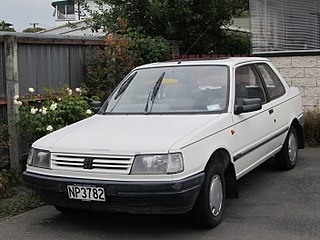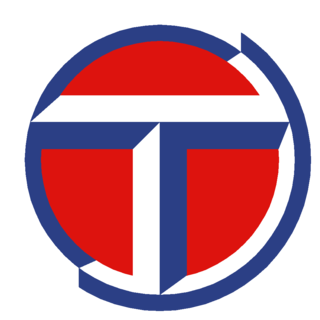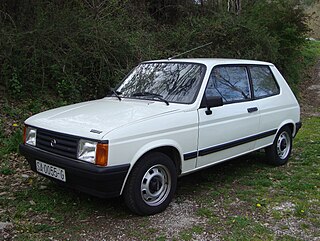The Type 180 was an automobile straight-4 OHC engine produced in the 1970s.
The Type 180 was an automobile straight-4 OHC engine produced in the 1970s.
These engines (1,639/1,812 cc) were used in the Chrysler 160/180, a car also sold under a multiplicity of other names.
Applications:
The 1,981 cc Type 180 was most common. It was used in various Chrysler Europe and Simca models.
Applications:

A 2.2 L (2,155 cc) version was also built. It was first used in the Talbot Tagora. Bore was 91.7 mm (3.61 in) and stroke was 81.6 mm (3.21 in) making a very oversquare design. This engine is sometimes confused with the 2,165 cc Renault/Peugeot Douvrin engine, but the displacement of the Simca 180 2.2-litre was slightly less. Later, this engine was also turbocharged, for use in the Citroën BX4TC and Peugeot 505 Turbos as the block was stronger than the Peugeot engine.
Applications:

Simca was a French automaker, founded in November 1934 by Fiat S.p.A. and directed from July 1935 to May 1963 by Italian Henri Pigozzi. Simca was affiliated with Fiat and, after Simca bought Ford's French subsidiary, became increasingly controlled by Chrysler. In 1970, Simca became a brand of Chrysler's European business, ending its period as an independent company. Simca disappeared in 1978, when Chrysler divested its European operations to another French automaker, PSA Peugeot Citroën. PSA replaced the Simca brand with Talbot after a short period when some models were badged as Simca-Talbots.

The V6 PRV engine is an automobile petrol V6 engine that was developed jointly by Peugeot, Renault and Volvo Cars – and sold from 1974 to 1998. It was gradually replaced after 1994 by another joint PSA-Renault design, known as the ES engine at PSA and the L engine at Renault. It was designed and manufactured by the company "Française de Mécanique" for PSA, Renault and Volvo.

The Peugeot 205 is a supermini (B-segment) car produced by the French manufacturer Peugeot from 1983 to 1999.

The Peugeot 405 is a large family car manufactured by the French automaker Peugeot from 1987 to 1997. Its production continued under license from outside Europe in Iran by Iran Khodro Company until 2020. It was voted European Car of the Year for 1988 by the largest number of votes in the history of the contest. About 2.5 million vehicles have been sold worldwide, both in left and right drive versions, as a saloon and estate. In early 2020, the 33-year production run of the Peugeot 405 was counted as the twentieth most long-lived single generation car in history."

The Peugeot 309 is a small family car that was manufactured between 1985 and 1994 in France, England and Spain by PSA Peugeot Citroën. It was originally intended to be badged as a Talbot and, as development progressed, to be called the Talbot Arizona.

Talbot is a dormant automobile marque introduced in 1902 by British-French company Clément-Talbot. The founders, Charles Chetwynd-Talbot, 20th Earl of Shrewsbury and Adolphe Clément-Bayard, reduced their financial interests in their Clément-Talbot business during the First World War.

The Talbot Horizon is a compact hatchback designed by Chrysler Europe and produced from 1978 to 1987. It was sold under the Simca, Chrysler and Talbot nameplates. The successor to both the Simca 1100 and Hillman Avenger, the Horizon adopted a front-wheel drive, transverse-engine layout.

The Talbot Tagora is an executive car developed by Chrysler Europe and produced by Peugeot Société Anonyme (PSA). The Tagora was marketed under the Talbot marque after PSA took over Chrysler's European operations in 1979. PSA presented the first production vehicle in 1980 and launched it commercially in 1981. The Tagora fell short of sales expectations, described as a "showroom flop" just a year after its launch, and PSA cancelled the model two years later. Fewer than 20,000 Tagora models were built, all of them at the former Simca factory in Poissy, near Paris, France.

The Simca 1307 is a large family car produced by Chrysler Europe and subsequently PSA Peugeot Citroën from 1975 to 1986. Codenamed 'C6' in development, the car was styled in the United Kingdom by Roy Axe and his team at Whitley, and the car was engineered by Simca at Poissy in France.

The Talbot Samba is a city car manufactured by the PSA Group in the former Simca factory in Poissy, France, and marketed under the short-lived modern-day Talbot brand from 1981 to 1986. Based on the Peugeot 104, it and the Talbot Express were the only Talbots not inherited from Chrysler Europe, engineered by PSA alone. It was also the last new Talbot car to be launched. Its demise in 1986 was effectively the end of the Talbot brand for passenger cars. Launched initially as a three-door hatchback, it was also for some time the only small car available in a factory-ordered cabrio body style, and the most economical car in Europe.

Chrysler Europe was the American automotive company Chrysler's operations in Europe from 1967 through 1978. It was formed from the merger of the French Simca, British Rootes and Spanish Barreiros companies. In 1978, Chrysler divested these operations to PSA Peugeot Citroën.

The PSA Group, legally known as Peugeot S.A. was a French multinational automotive manufacturing company which produced automobiles and motorcycles under the Peugeot, Citroën, DS, Opel and Vauxhall brands. On 18 December 2019, PSA and Fiat Chrysler Automobiles (FCA) announced that they had agreed to the terms of a binding $50 billion merger. On 16 July 2020, both companies announced the new name for their merged operations, Stellantis. The deal closed on 16 January 2021. As of 2022, Stellantis is fourth largest automaker by sales behind Toyota, Volkswagen Group, and Hyundai Motor Group.

The AJD is a family of V6 and V8 turbodiesel engines with a clean-sheet architecture and variable valve timing developed by Ford of Europe for its then-subsidiaries Jaguar and Land Rover, as well as for its partner PSA Group working under the Gemini joint development and production agreement. It is called the AJD-V6 in the Jaguar and Land Rover vehicles and the DT17/DT20 by Citroën and Peugeot. The engines share the same bore/stroke ratio, with the V6 version displacing 2.7 L (2,720 cc) and the V8 version displacing 3.6 L (3,630 cc). The V6 and the V8 were launched in 2004 and 2006 respectively. The V6 engine meets the Euro IV emissions standards. A DT20 3.0 L (2,993 cc) was added in 2009 and is based on the DT17 2.7 L (2,720 cc). The V6 is used across many vehicles, from the Citroën C5 and C6, to the Land Rover Discovery, Range Rover, multiple cars in the Jaguar range, and also the Ford Territory and next gen Ford Ranger.

The Simca Poissy engine, commonly known as the Simca 1100 engine, was a four-cylinder Overhead valve engine developed by Simca for use in its superminis and economy cars, designed by the engineer Georges Martin. In spite of its common name, the engine actually predates the Simca 1100 model, and debuted in 1961 in the Simca 1000. It was developed and produced by Simca in the late 1960s at the manufacturer's factory in Poissy, hence its name.

The Matra Murena is a mid-engined, rear wheel drive sports car that was produced from 1980 through 1983 by the French engineering group Matra. The factory was located in the commune of Romorantin-Lanthenay in the department of Loir-et-Cher in central France.

Prince is the codename for a family of straight-four 16-valve all-aluminium gasoline engines with variable valve lift and variable valve timing developed by BMW and PSA Peugeot Citroën. It is a compact engine family of 1.4–1.6 L in displacement and includes most modern features such as gasoline direct injection and turbocharger.

The Chrysler 180 was the base name for a series of large saloon cars produced by Chrysler Europe. Resulting from joining the development efforts of Rootes Group and Simca, the car was produced from 1970 to 1975 in Poissy, France, and later in Chrysler's subsidiary Barreiros' factory in Spain. The Chrysler 180 was also the base for the medium-sized model built by Chrysler Australia, the Chrysler Centura.
France was a pioneer in the automotive industry and is the 11th-largest automobile manufacturer in the world by 2015 unit production and the third-largest in Europe. It had consistently been the 4th-largest from the end of World War II up to 2000. It is 16% of sales of French manufactured products.
The Stellantis Poissy plant is a car plant belonging to Stellantis located in Poissy, Yvelines, France. It is dedicated to the manufacturer's Platform 1 cars, which are cars in the subcompact class, with an annual output of approximately 200,000 cars. Together with the R&D Centres at Carrières-sous-Poissy and at Vélizy, it is one of three major establishments that the company runs in the department.